Classic bodyweight poses and how to do them correctly and safely.
Have you ever exercised and found yourself wondering if you were doing it right? Or maybe you finished working out and all of a sudden you realized that you tweaked your knee or lower back?
Don’t worry, you’re not alone. Trying a new exercise can be challenging and confusing, especially if you are on your own, and at one point or another we have all found ourselves in that situation. Having correct form, though, is key. Proper posture and alignment will protect your joints and muscles so that you can avoid injuries that can potentially keep you from exercising or even functioning normally during your day-to-day.
Looking for an easy way to get started working out? Get our FREE Beginners Workout Guide
3 weeks to Tighter Abs, Sculpted Arms, and Toned Legs here!
Here we will break down 10 of the most common bodyweight poses and show you what they look like when done correctly and incorrectly. We recommend practicing these next to a mirror so that you can watch your form.
Squats

This exercise works the glutes, quadriceps, and hamstrings. Poor alignment and form in this exercise can lead to knee and lower back injury and strain in the neck.
- Begin standing with your feet hip-width distance apart, toes pointing forward. Engage your abs by pulling your navel up and in towards your spine. Reach your arms straight out in front of you with your palms face down.
- Keep the weight back in your heels and inhale as you start to bend your knees, sitting your hips back like you are going to sit in a chair. Squeeze your shoulders down your back to avoid rounding in the shoulders and neck, and make sure to keep your knees in line with your toes. Your spine should be straight the whole time.
- Exhale to press through your heels and straighten your legs to stand back up. Squeeze your glutes at the top and make sure to not lock out your knees completely.
COMMON MISTAKES with this exercise include: rounded shoulders, rounding in the lower/mid back, dumping weight into the toes (which puts strain on the knee joints), and not having the knees in line with the toes.
Single Leg Deadlifts
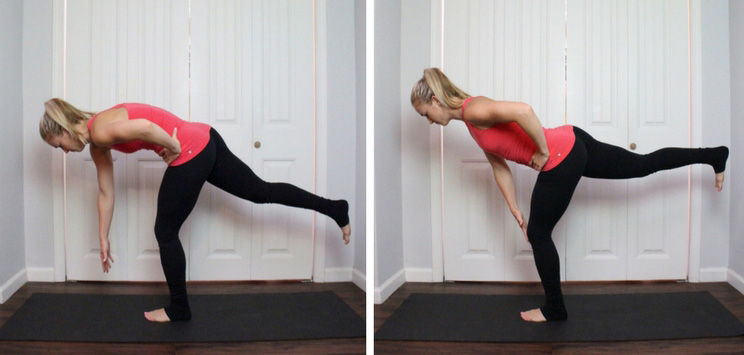
This exercise strengthens the glutes and hamstrings and helps to improve balance and coordination. When done incorrectly, you can risk injury in the lower back or hamstrings.
- Start standing up with your feet together. Engage your abs and squeeze your shoulder blades together.
- Shift your weight onto your left foot and point your right foot on the floor behind you. Place your left hand on your hip and reach your right hand out in front of you.
- Keeping a small bend in your left knee, inhale, and slowly lift your right foot and lower your torso towards the ground at the same time. Keep your back flat and reach your right hands towards your left knee. Try to keep a straight line between the right foot and the crown of your head. Exhale to slowly stand back up to start. Switch sides.
COMMON MISTAKES with this exercise include: locking out the bottom leg, rounding in the shoulders, rounding in the upper and mid back, and moving too quickly (causing the loss of balance).
Side Lunge
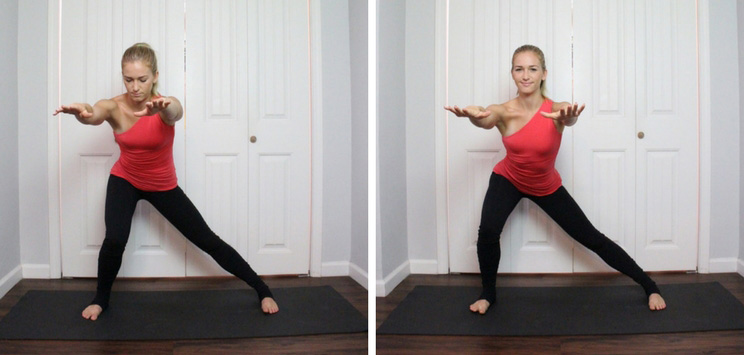
This lateral moving exercise is great for coordination and builds strength in the glutes, quadriceps, hamstrings, adductors, and abductors. When done incorrectly, this can lead to injury in the knees, hips, and lower back.
- Begin standing with your feet together. Reach your hands straight out in front of you and engage your abs.
- Inhale to step one foot out to the side. Bend into the knee and sit your hips back like you are going to sit in a chair. Keep the weight in your heel and bend the knee to 90 degrees, making sure the knee stays in line with your toes. Maintain a lift in your chest by squeezing your shoulders down your back. Make sure the other leg is still straight and the foot is flat on the ground.
- Exhale and press through the heel of the bent knee to straighten the leg and step the foot back to start. Switch sides.
COMMON MISTAKES with this exercise include: rounding in the shoulders and back, not stepping out far enough, not keeping the weight in the heels, and not keeping the lunging knee in line with the toes.
High Plank
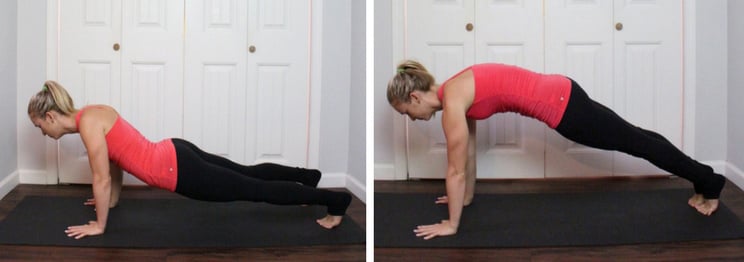
This isometric bodyweight exercise builds strength in the core, shoulders, arms, quadriceps, chest, and back. When done incorrectly, this can lead to injury in the lower back, shoulders, and wrists.
- Start on your hands and knees in a tabletop position. Walk your hands in front of your shoulders a couple of inches, then tuck your toes and lift your knees off the ground.
- Straighten your legs and readjust your hands to make sure that the wrists are lined up under your shoulders and your heels are lifted high. Firm up your quadriceps, glutes, and abs.
- Create the sensation of pressing the ground away from you by pressing firmly through your palms, knuckles, and fingertips. The space between your shoulder blades should puff up slightly. You should feel your abs working. If you start to feel your lower back, lower to your knees to modify your plank.
COMMON MISTAKES with this exercise include: arching of the lower back, dumping weight into the shoulders and wrists, not engaging muscles of the abs, quadriceps, and glutes.
Mountain Climbers
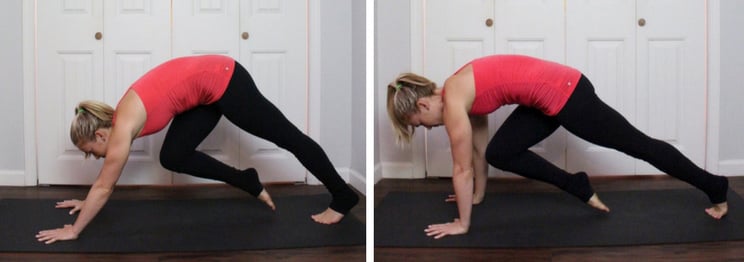
This exercise is great because it works the entire body (core, shoulders, arms, and legs), and it also gives you a great cardio boost. When done incorrectly though, you can run the risk of injuring your back, shoulders, and even the neck.
- To begin, come into a high plank position. Stack your shoulders over your wrists and bring your feet together. Firm up your quads and make sure your arms are nice and strong, pressing the ground away from you. Spread your fingers wide to press down through your fingertips, knuckles, and palms. Engage your abs and keep your gaze between your hands.
- Inhale to pick your right foot up off of the ground, then exhale to draw your right knee in towards your chest. Pull your abs in tightly. Inhale to place your right foot back down and immediately pick your left foot up.
- Exhale to draw your left knee in towards your chest. Inhale to place your left foot back down and immediately pick up your right foot.
COMMON MISTAKES with this exercise include: not keeping the shoulders stacked over the wrists, having the fingers too close together, lifting the hips up towards the ceiling, and looking back towards your legs so that your neck ends up rounded.
Side Plank
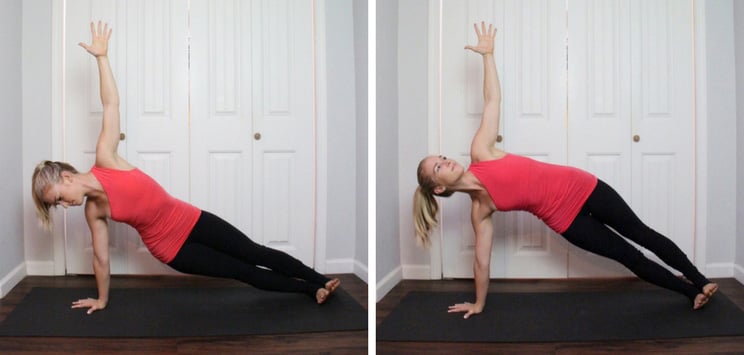
This exercise works the obliques, shoulders, and arms. Doing this isometric exercise incorrectly can risk injury to the lower back, shoulders, and wrists.
- Begin in a high plank position. Spread your fingers wide and grip the mat with your fingertips. This helps to distribute weight evenly throughout the hands to avoid dumping all of your weight into the wrists. Make sure your shoulders are stacked above your wrists and bring your feet together. Firm up your quads, glutes, and abs so that the whole body is working.
- Shift your weight onto your right hand and, keeping your feet together, spin your heels down to the right. Stack your left foot on top of your right, making sure to keep both feet flexed.
- Inhale and reach your left hand up towards the ceiling. Reach through your left fingertips and lift up through your left hip to keep weight out of the right wrist.
COMMON MISTAKES with this exercise include: having the fingers too close together, turning the fingertips to face inward, dumping weight into the supporting shoulder and wrist, and letting the hips drop towards the floor.
Downward Dog
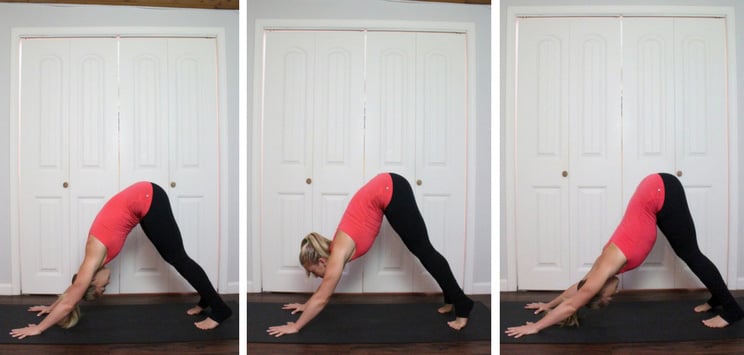
This pose builds strength in the shoulders, arms, and core, and also stretches the hamstrings, back, and calves. When done incorrectly, you can risk injury in the neck, shoulders, wrists, and back.
- Start on your hands and knees in a tabletop position with your hands a couple of inches in front of your shoulders. Engage your abs and spread your fingers wide.
- Tuck your toes under and press down firmly into your hands. Exhale as you lift your hips up towards the ceiling to make a V-shape with your body.
- Roll your shoulders out externally so that your biceps begin to face forward. Pull your lower belly up and in so that your core is engaged; reach your tailbone up towards the ceiling. Press your chest back towards your thighs and gaze towards your belly button. Your back should be nice and straight, and you should feel a stretch through your hamstrings, calves, and back. If you feel that your back is rounded, bend your knees so that you can lengthen out your spine.
COMMON MISTAKES with this exercise include: having the fingers too close together, dumping weight into the wrists and shoulder, rounding in the mid back, and looking out in front of you (causing strain in the neck).
Bridge

This pose is great for building strength in the back, glutes, and hamstrings. When done incorrectly though, it can lead to knee, lower back, or neck injury.
- Start by lying down on your back. Bend your knees and place your feet on the ground, hip-width distance apart. Walk your feet back towards your glutes so that your knees are lined up over your ankles.
- Place your arms down alongside your body with your palms face down. Make sure that you have a slight tuck of the chin so that your neck is long.
- Inhale and press into your arms and feet to lift your hips up towards the ceiling. Engage your glutes and inner thighs and keep your knees in line with your toes.
COMMON MISTAKES with this pose include: tilting the chin back so that there is an arch in the neck, having the feet too far forward, having the feet too close to you so that the heels begin to lift, and not keeping the knees in line with the toes.
Boat Pose
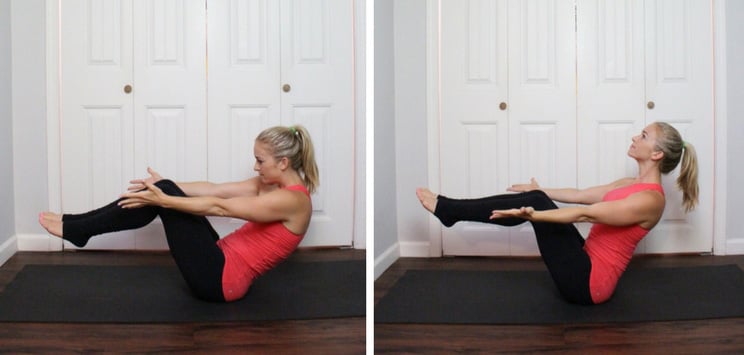
This pose is great for building core strength, but when done incorrectly, it can lead to strain in the lower back.
- Start by sitting on the floor. Bring your legs together, bend your knees and place your feet on the floor. Sit up tall and place your hands behind your thighs. Engage your abs by pulling your lower belly up and in towards your spine.
- Take an inhale as you pull against the backs of your thighs and lift your chest. Squeeze your shoulder blades together and lengthen through your collar bone. Point your toes and lift your heels off the ground. Slowly lift one foot up and then the other, bringing both shins parallel to the mat.
- Release your hands from behind your thighs and reach your arms straight out in front of you, with your palms face up. Keep that lift in your chest and squeeze your legs together.
Tip: If you feel strain in your lower back, keep your pointed toes on the ground.
COMMON MISTAKES with this pose include: rounding in the shoulders and back, and not engaging the abs.
Locust Pose

This pose builds strength in the back, shoulders, and glutes. When done incorrectly though, this pose can lead to strain in the neck.
- To begin, lie on the floor face down. Bring your forehead to rest down so that your neck is long, and then zip your legs up together. Bring your arms down alongside your body with your palms face down.
- Inhale and lift your chest, arms, and thighs off of the ground. Keep looking down towards the top of your mat so that your neck is free of wrinkles. Turn your palms to face inward and squeeze them in towards one another. Reach up through your pinkies to turn on the triceps.
- Reach back through your toes and forward through the crown of your head. With every inhale, try and lift a little bit higher and with every exhale, squeeze your legs together a little bit more.
COMMON MISTAKES with this pose include: looking up so that you crank the neck and not squeezing the thighs together.

(Your Next Workout: 25 Bodyweight Exercises You Can Do at Home)


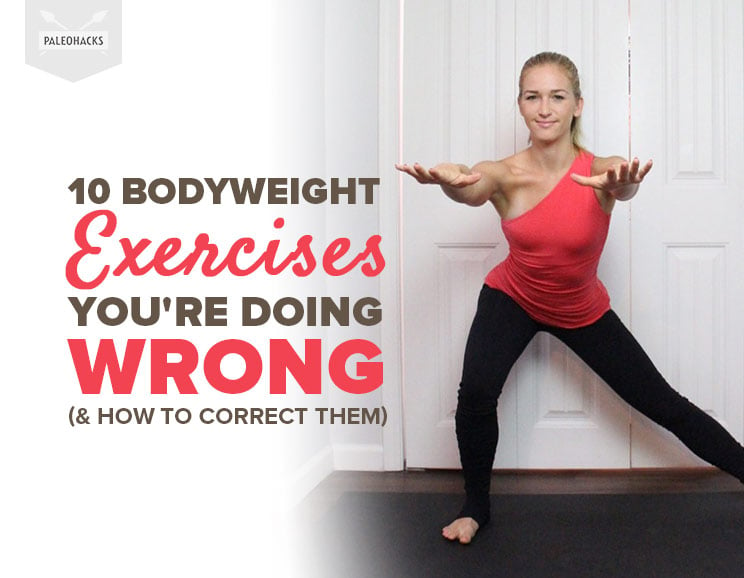

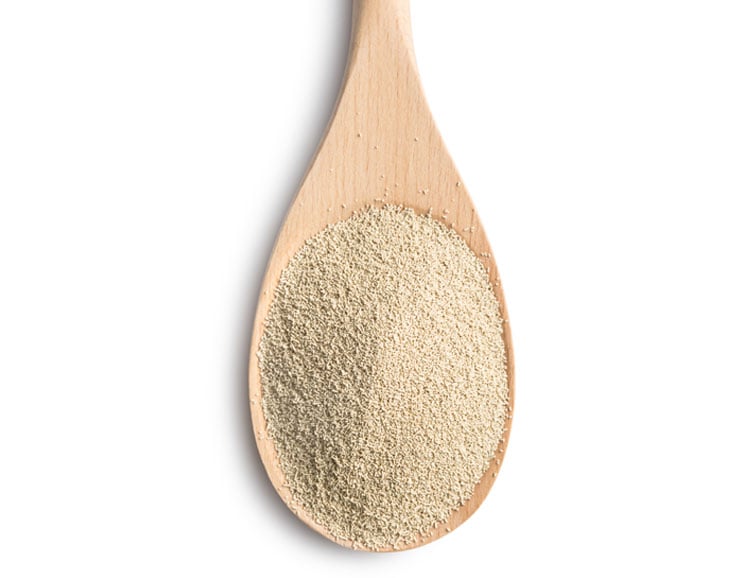 8 Genius Ways to Use Nutritional Yeast
8 Genius Ways to Use Nutritional Yeast
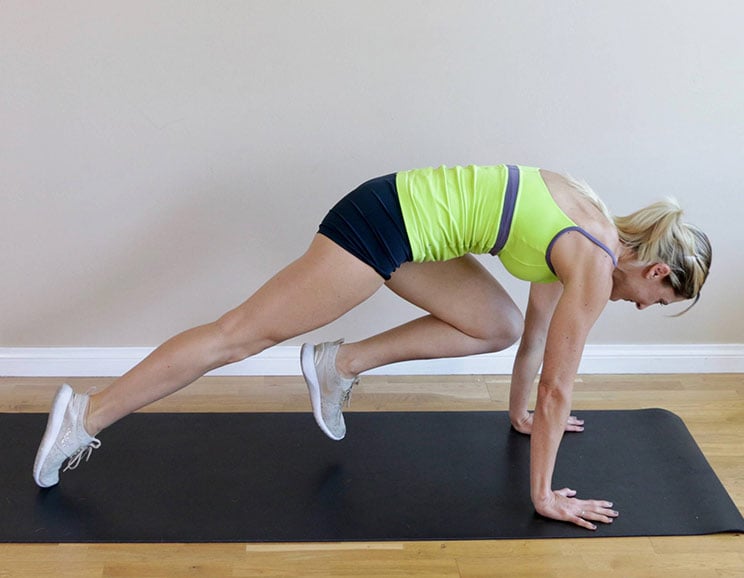

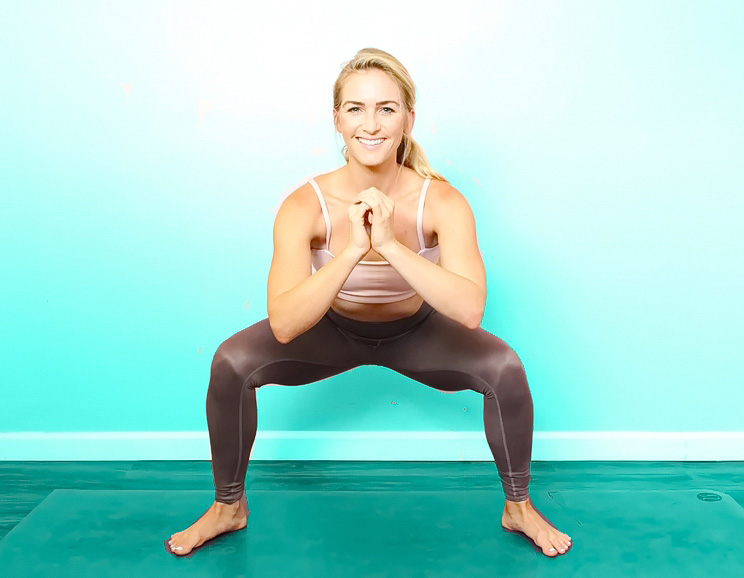
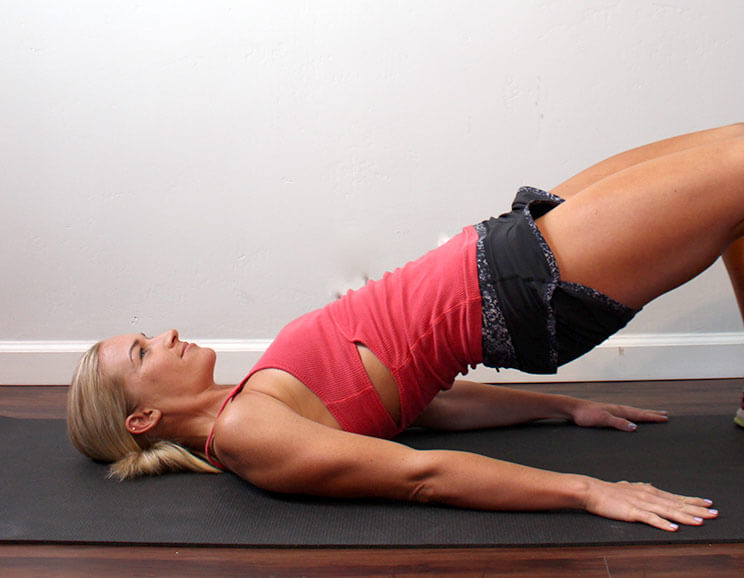

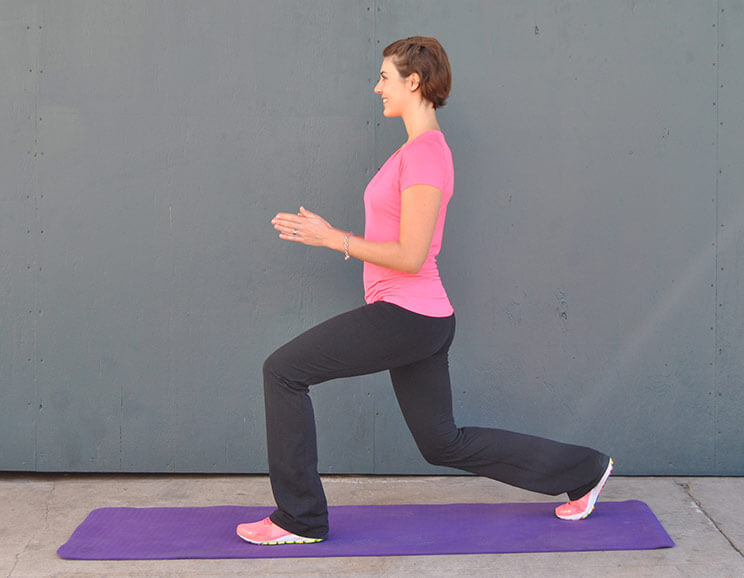
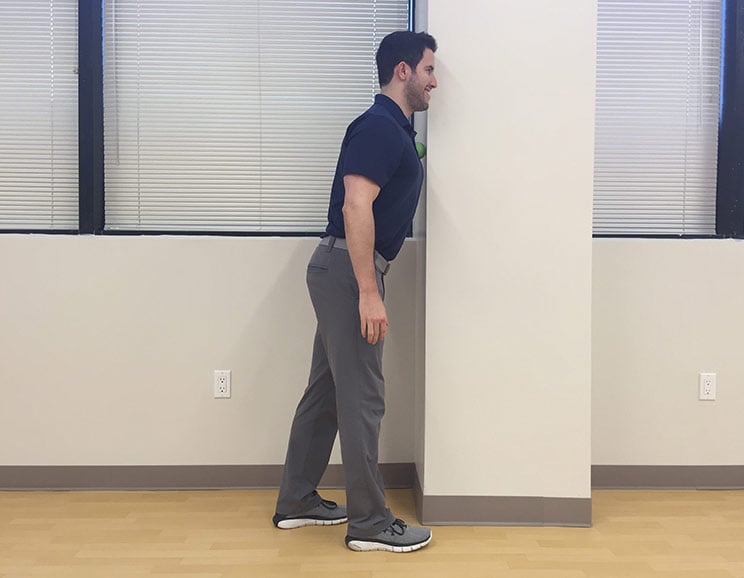

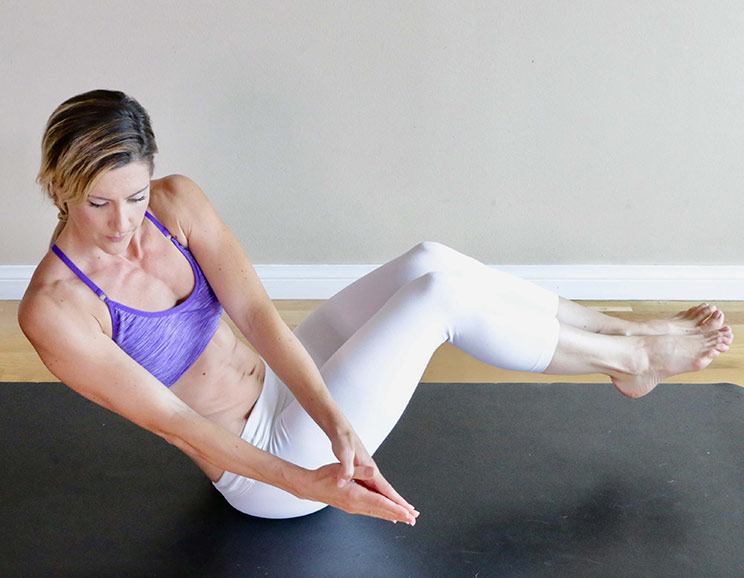
Show Comments